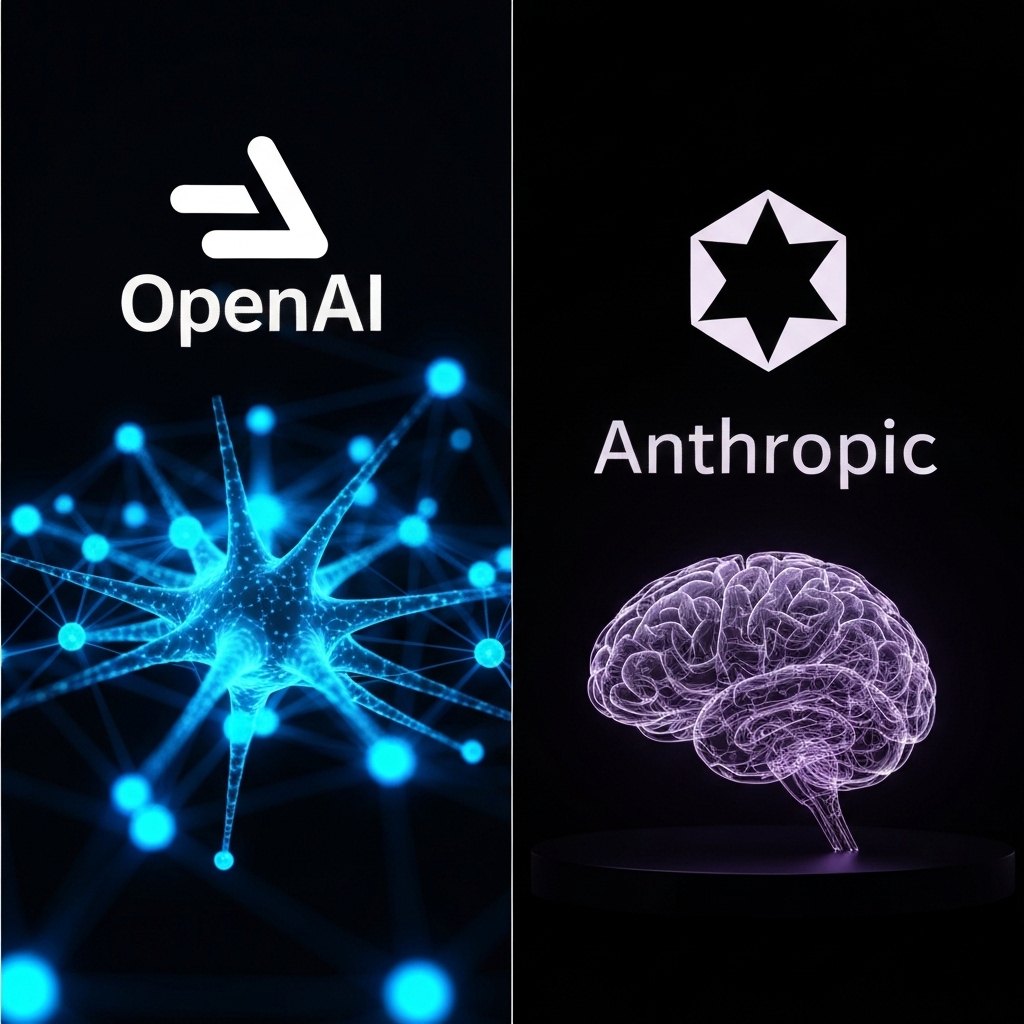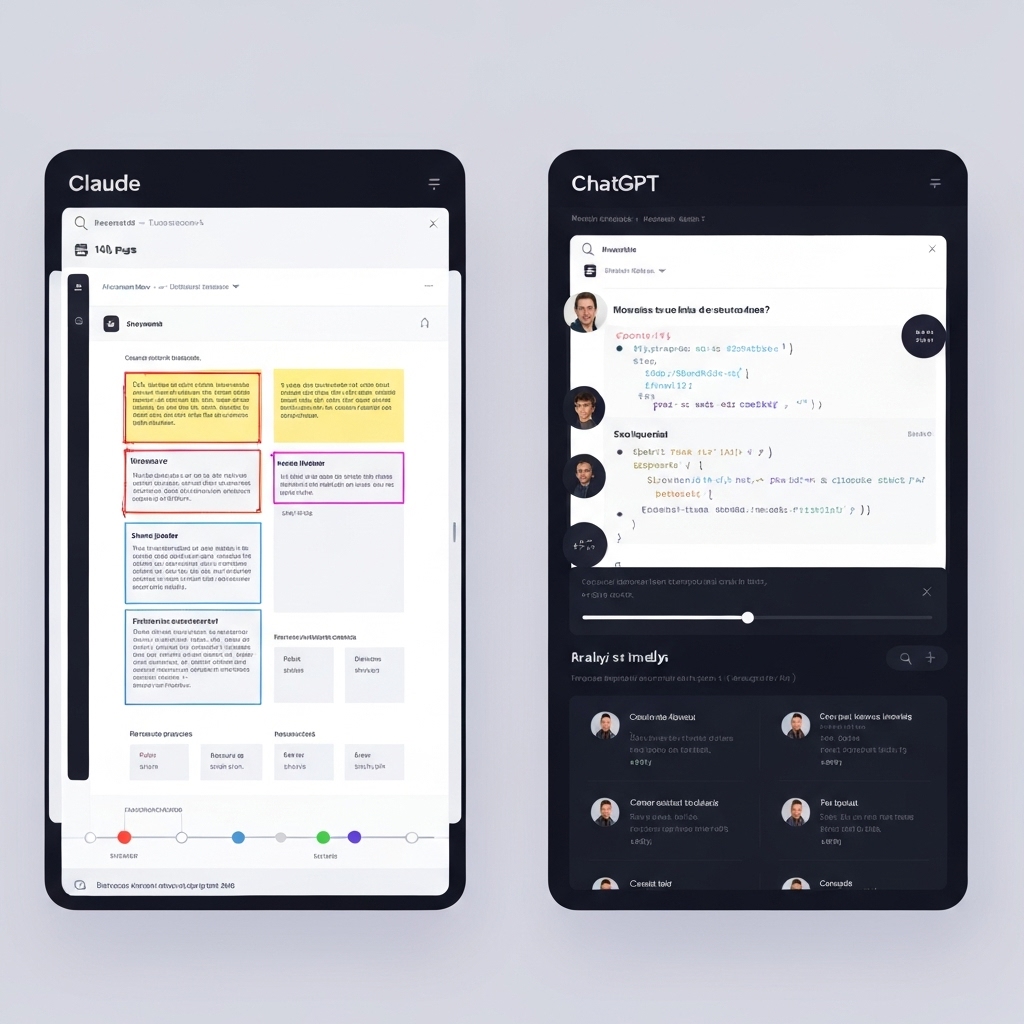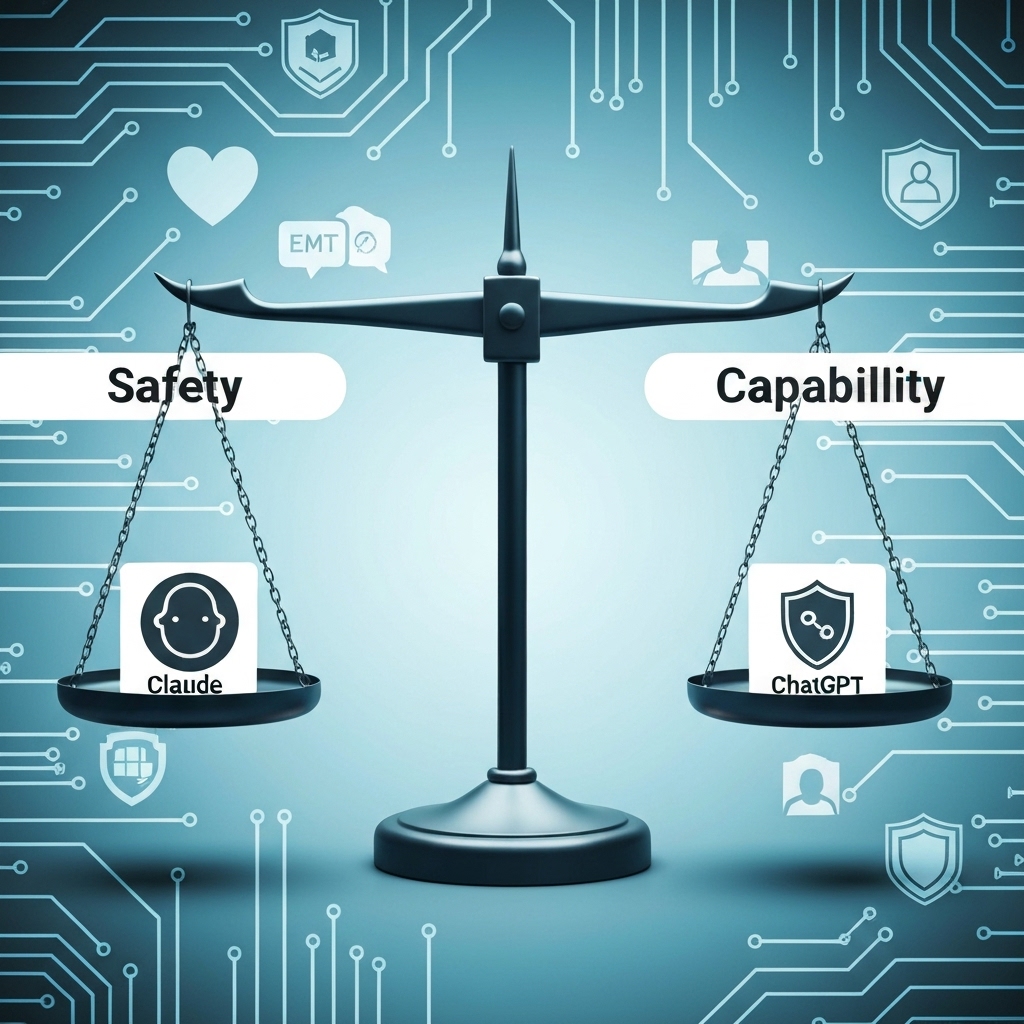ChatGPT vs Claude: A Comprehensive Comparison of Two Leading AI Assistants
ChatGPT vs Claude: A Comprehensive Comparison of Two Leading AI Assistants
As artificial intelligence reshapes how we interact with technology, AI assistants like ChatGPT and Claude have become indispensable tools for individuals and businesses alike. Developed by OpenAI, ChatGPT leverages the powerful GPT-4 architecture to deliver fluent, context-aware responses across a vast range of topics. Its widespread adoption is due in part to its seamless integration into workflows, from content creation to coding assistance. Meanwhile, Claude, crafted by Anthropic, emphasizes safety, interpretability, and long-context understanding—making it particularly effective for processing lengthy documents and sensitive applications.
One of the key differentiators between these models lies in their approach to reasoning and ethical AI design. Claude is built on Anthropic’s Constitutional AI principles, aiming to reduce harmful outputs by aligning responses with human values—a feature highlighted in research published by arXiv. In contrast, ChatGPT benefits from OpenAI’s extensive training data and iterative public feedback loops, enabling highly creative and diverse outputs. While both models excel in natural language understanding, users seeking greater control over tone and safety may lean toward Claude, whereas those prioritizing versatility and ecosystem support might prefer ChatGPT.
Performance-wise, each assistant shines in different scenarios. Claude supports context windows up to 200,000 tokens, allowing it to analyze entire books or complex codebases in a single session—an advantage for researchers and developers. On the other hand, ChatGPT integrates smoothly with platforms like Microsoft Teams, Slack, and various APIs, enhancing its utility in enterprise environments. According to benchmarks from Papers With Code, both models rank among the top performers in reasoning tasks, though slight variations exist depending on the specific use case.
Ultimately, choosing between ChatGPT and Claude depends on your priorities. If you value deep contextual analysis and strong ethical safeguards, Claude offers a compelling option. However, if you're looking for broad functionality, third-party integrations, and proven performance across creative and technical domains, ChatGPT remains a leading choice. As both systems continue to evolve, staying informed about their advancements ensures you can leverage the full potential of AI in your personal or professional endeavors.
Origins and Development
ChatGPT, developed by OpenAI, represents a significant leap in natural language processing, stemming from the groundbreaking GPT series of models that began with GPT-1 and evolved through iterative advancements to GPT-3.5 and beyond. OpenAI, founded in 2015 with a mission to ensure artificial general intelligence (AGI) benefits all of humanity, fine-tuned ChatGPT specifically for conversational interactions, making it highly effective in understanding and generating human-like text across diverse topics. This focus on dialogue enables ChatGPT to assist users in answering questions, writing stories, coding, and more, positioning it as one of the most versatile AI tools available today. For more information on OpenAI's research and mission, visit their official website at openai.com.
In contrast, Claude was developed by Anthropic, a company established by former OpenAI researchers who placed strong emphasis on AI safety, reliability, and ethical development. Unlike traditional training approaches, Claude is built on the Constitutional AI framework—a novel methodology that guides model behavior by instilling principles such as honesty, helpfulness, and harmlessness directly into the training process. This self-supervision technique allows Claude to evaluate and refine its own responses, reducing harmful or misleading outputs without relying solely on human feedback. The result is an AI system designed to be more transparent and aligned with human values. To learn more about Anthropic’s approach to responsible AI, explore their research at anthropic.com.
While both ChatGPT and Claude are powerful language models capable of handling complex tasks, their underlying philosophies reflect different priorities in the broader AI landscape. OpenAI’s trajectory emphasizes capability and broad accessibility, rapidly iterating on model performance to push the boundaries of what AI can do. Meanwhile, Anthropic’s focus on safety-first development highlights the importance of building trustworthy systems that can be reliably deployed in sensitive environments. These differing approaches underscore a critical conversation in AI development: balancing innovation with responsibility.
As organizations and individuals increasingly adopt AI assistants, understanding the foundational differences between models like ChatGPT and Claude becomes essential. Whether prioritizing versatility and wide-ranging functionality or emphasizing ethical alignment and safety, each model offers distinct advantages depending on user needs. Staying informed about how these systems are developed—and the principles guiding their creators—empowers users to make better decisions about which tools to trust. For deeper insights into AI ethics and model transparency, authoritative resources like the arXiv provide access to peer-reviewed research shaping the future of artificial intelligence.

Performance and Capabilities
When comparing leading AI models like ChatGPT and Claude, it's clear that both bring significant strengths to natural language understanding and code generation. ChatGPT, particularly in its GPT-4 iteration, stands out for its remarkable creativity and extensive knowledge base, enabling it to perform well across a broad spectrum of tasks—from content creation to problem-solving. Its seamless integration with third-party platforms such as OpenAI's API ecosystem enhances its appeal for developers and enterprises looking to embed advanced AI capabilities into their applications.
On the other hand, Claude 3 by Anthropic demonstrates superior reasoning skills and excels in mathematical accuracy and comprehension of complex instructions. This makes it especially valuable for technical domains requiring precision and logical consistency. Unlike some models that may generate plausible-sounding but incorrect information, Claude places a strong emphasis on factual reliability and minimizing hallucinations, a commitment reflected in Anthropic’s focus on safety and interpretability—principles detailed on their official site at anthropic.com.
While ChatGPT offers versatility and creative fluency, Claude 3 shines in delivering concise, well-structured responses ideal for analytical and enterprise workflows. For organizations prioritizing accuracy and clarity in high-stakes environments—such as legal analysis or financial modeling—Claude’s disciplined approach can be a decisive advantage. More insights into real-world applications of these models can be explored through trusted resources like Harvard Business Review, which frequently covers AI implementation strategies.
Ultimately, the choice between ChatGPT and Claude depends on specific use cases and priorities. Businesses seeking broad functionality and creative support may lean toward ChatGPT, while those demanding rigorous logic and factual integrity might prefer Claude 3. As both models continue to evolve, staying informed through authoritative sources like arXiv.org ensures decision-makers can leverage the latest advancements in AI responsibly and effectively.
Context Length and Memory
Claude's ability to handle a context window of up to 200,000 tokens in its latest iteration, Claude 3, sets it apart from many other large language models on the market. This expansive capacity allows users to input entire books, lengthy research papers, or complex technical documentation without the need for segmentation. Unlike models constrained by smaller token limits, Claude maintains contextual coherence across vast stretches of text, making it exceptionally reliable for tasks like summarizing legal contracts or analyzing scientific literature in full. For professionals dealing with dense material, this feature translates into significant time savings and deeper insights.
In contrast, ChatGPT’s standard context window supports up to 32,768 tokens—still robust and adequate for most everyday applications such as drafting emails, generating reports, or answering queries. However, when working with extensive documents like full-length manuscripts or comprehensive datasets, this limitation can necessitate breaking content into chunks, which may disrupt continuity and increase processing time. While OpenAI continues to innovate, as seen with advancements in GPT-4, the gap in context length remains a key differentiator. More details about ChatGPT’s capabilities can be found on OpenAI’s official website.
The practical implications of Claude’s extended memory are profound, especially in academic, legal, and enterprise environments where precision and context retention are critical. By processing more information at once, Claude reduces the risk of missing nuanced details that might be lost when analyzing text in fragments. This makes it particularly effective for use cases like compliance audits, codebase reviews, or comparative literary analysis. Further insights into Claude’s architecture are available through Anthropic’s research publications.
Ultimately, while both models offer powerful AI-driven assistance, Claude’s superior context handling gives it a distinct advantage for long-form content processing. Users who regularly engage with large documents will find that the model’s design aligns closely with their workflow demands. As AI continues to evolve, features like extended context windows will likely become standard benchmarks for evaluating performance, pushing the industry toward even greater efficiency and accuracy.

Ethics, Safety, and Transparency
Anthropic has built its reputation on a foundation of AI safety, pioneering the development of Constitutional AI—a framework designed to guide models like Claude toward ethical and responsible behavior. By embedding explicit principles that prioritize honesty, harm reduction, and respect for human rights, this approach enables the model to self-correct potentially harmful outputs before they are delivered. This proactive method not only reduces the risk of misuse but also strengthens user trust by aligning AI responses with widely accepted human values. For more information on Constitutional AI, visit Anthropic's official overview.
In contrast, OpenAI has pursued aggressive innovation and widespread accessibility, which has led to increased public scrutiny. While OpenAI implements safety protocols and regularly updates its content moderation systems, the rapid deployment of models like ChatGPT has occasionally resulted in unintended consequences, drawing criticism from regulators and researchers alike. Despite these challenges, OpenAI leads in transparency, offering extensive API documentation and developer tools that encourage broad integration across industries. Developers can explore ChatGPT’s capabilities through OpenAI’s platform documentation.
One key distinction between the two companies lies in their deployment strategies. Anthropic maintains tighter control over how Claude is integrated into third-party applications, ensuring adherence to strict usage policies that minimize potential abuse. This cautious approach prioritizes long-term safety over speed to market, reflecting a philosophy that responsible AI must be guided as much by restraint as by capability. Such measures resonate with organizations seeking reliable and ethically sound AI partners.
Ultimately, both Anthropic and OpenAI recognize the importance of safety in advancing artificial intelligence, but they balance it differently against innovation and access. As the industry evolves, the trade-offs between openness and control will continue to shape public trust and regulatory expectations. Staying informed through authoritative sources like the Partnership on AI can help stakeholders navigate these complex decisions responsibly.

Conclusion: Which One Should You Choose?
When deciding between ChatGPT and Claude, it's essential to consider how each model aligns with your workflow and objectives. ChatGPT, developed by OpenAI, excels in creative tasks, coding assistance, and seamless integration across various platforms and applications. Its widespread adoption means robust community support and extensive third-party tools, making it a versatile choice for developers, writers, and entrepreneurs. For those who prioritize flexibility and access to advanced features like GPT-4 Vision and DALL·E integration, ChatGPT offers unmatched functionality. You can learn more about its capabilities on the official OpenAI website.
On the other hand, Claude, created by Anthropic, is engineered with a strong emphasis on reasoning, safety, and handling long-form content. With context windows supporting up to 200K tokens, Claude can process entire documents or complex codebases in a single prompt—ideal for researchers, legal professionals, and enterprise environments where accuracy and context retention are critical. Its design principles prioritize harm reduction and truthful responses, which makes it particularly reliable for sensitive or high-stakes applications. More details on Claude’s architecture and safety measures are available at Anthropic’s official site.
Ultimately, the decision isn’t necessarily about which AI is “better,” but rather which one serves your current needs more effectively. Many professionals find value in using both models: turning to ChatGPT for brainstorming and creative generation, while relying on Claude for detailed analysis and document summarization. This complementary approach maximizes the strengths of each system.
As AI continues to evolve, tools like ChatGPT and Claude are setting new standards for productivity, creativity, and responsible innovation. Staying informed about their advancements ensures you can make strategic decisions that enhance your work. For independent evaluations and performance benchmarks, resources like arXiv provide peer-reviewed insights into the latest developments in large language models.
